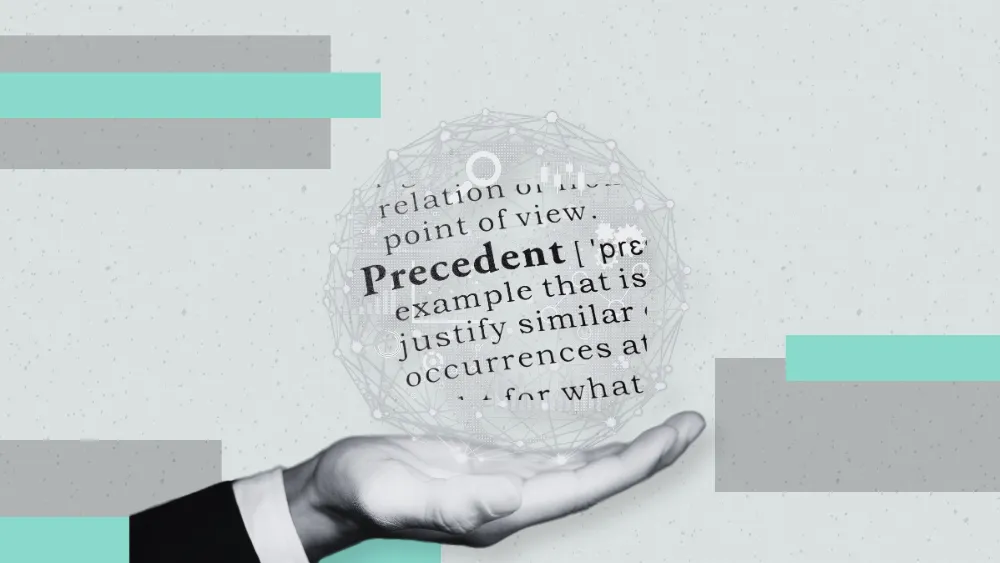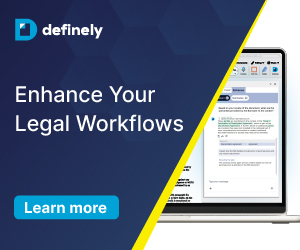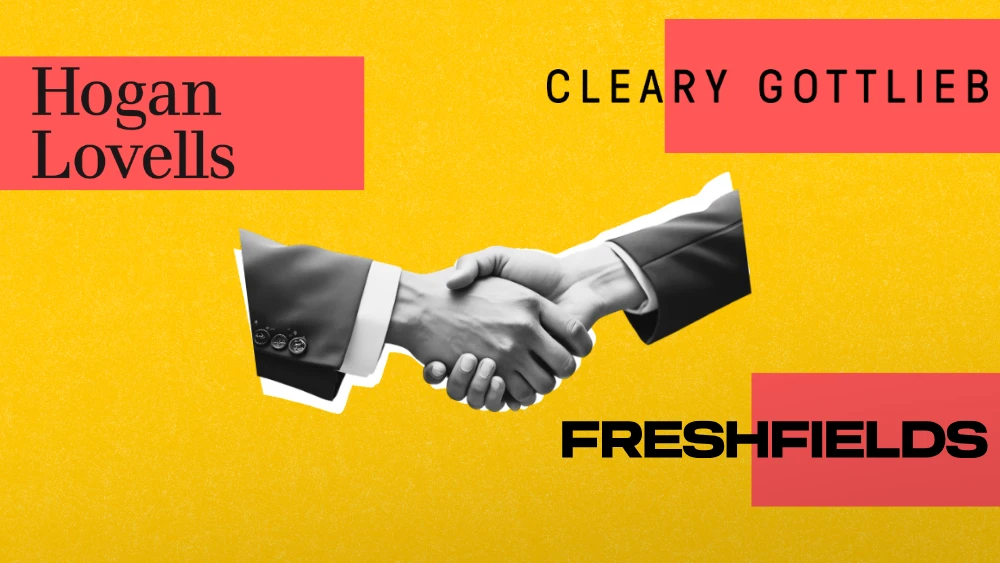Why Proprietary Data Can Be Your Big Legal AI Advantage
Definely's Rhys Hodkinson on why proprietary data is a law firm's secret weapon in the AI era.

Horizontal, broad-application AI tools can be powerful, but they’re either built on generic public data or blend LLM outputs with your proprietary data in a manner that makes it hard to discern how much of the output is attributable to a firm’s cumulative, proprietary dataset. Every firm with a subscription can then access an output that may diminish your own competitive advantage.
What sets you apart is your proprietary data. The work you’ve done, the contracts you’ve written, and the institutional knowledge that your organisation has built up over time. That value is something that you don’t want to be replaced or diluted with generic information.
AI companies make a lot of noise about their fine-tuning or legal-sounding answers being their core strength. But they don’t take into account your workflows or the value of your proprietary data.
Ask yourself one main question: If everyone’s output looks the same, what differentiates your law firm?
The problem with generic AI
The majority of tools either exclusively draw on their own dataset or blend your prompts, guidelines and portions of your data with their RAG models to create a response. This results in blended outputs, where it’s difficult to know how much of the data is composed of your knowledge versus more generic information.
This makes it harder to demonstrate the unique value your firm brings to clients, often rooted in institutional knowledge and experience with specific transaction types or disciplines. Tools trained on broadly available legal data will produce more standardised outputs, accessible to any firm, client or department using them. As a result, key differentiators such as your precedent strategy, risk tolerance or client-specific nuances risk being flattened into a one-size-fits-all approach and diluting the value that your firm is bringing to your work.
If you were a client, paying each law firm a million dollars a year, and found out you could generate similar outputs using a blended, horizontal GenAI tool you’d wonder why you were using the law firms, right? Why not just use the solution yourself and cut the costs?
There’s also the further problem that if you take the time to validate and assess the accuracy of the output against your own proprietary knowledge, it often offsets the time saved by using the tool in the first instance.
This all undermines the unique experience and historic data that your firm or department has. As much as anything else, lawyers are knowledge workers. That’s a big part of the value proposition in the first place.
The context-rich, tailored dataset that your firm has curated over their lifetime is the one you need your AI to be exclusively working with, rather than a generic one - because that’s the expertise that people came to you for in the first place.
This combination of AI and your proprietary data is a powerful one - it means that your AI is working based on your history, decisions and judgement, making your AI more firm-specific. This allows you to use AI in a way that supports how you work, and add to your value, rather than using generic data that everyone else has access to.
With tools trained on broadly available legal data, key differentiators such as your precedent strategy, risk tolerance or client-specific nuances risk being flattened into a one-size-fits-all approach.
Enhancing your workflow
Supporting how you work is exactly what Definely Enhance was built to do. Our legal AI assistant is embedded, like the rest of Definely’s products, directly into Word, where you’re already working.
Enhance is also set up in a way to draft, rework or respond to queries based solely on your own proprietary data, giving you the confidence that the output is reflective of your firm’s reputation and specific expertise. The answers it gives are also fully sourced for transparency, so you’ll have the added security of knowing exactly where the information has come from.
You don’t need to export data to third-party tools or rely on generic data to get the best out of Enhance. Nor do you need to interrupt your workflow in order to use it. Instead, you can use it to explore, review and change your document while you’re working on it. The whole point is to augment your workflow, rather than replace it.
Your proprietary data is also something that makes agentic AI systems more powerful. Because these agentic tools act semi-autonomously (reasoning and recommending like a junior associate might), they’re less effective if they’re acting in a generic way.
By working with your documents and prior work, Enhance is able to make decisions and recommendations with a better understanding of what your firm wants. This guides its decisions and insights and feeds into the content that Enhance drafts.
Because Enhance is plugged directly into Word, it also creates more efficiencies. A lot of AI tools are third-party, so involve interrupting your workflow in order to get the most out of them. Not only that, but you then have to interrupt that workflow in order to take its outputs and put them into the Word document. Enhance, instead, keeps lawyers focused on legal thinking, not technical juggling.
Your proprietary data makes agentic AI systems more powerful - agentic tools act semi-autonomously, they’re less effective if they’re acting in a generic way.
Owning your data
Generic AI tools can be powerful, but they’re built on generic public data. Every firm can access them. What sets you apart is your proprietary data. The work you’ve done, the contracts you’ve written, and the institutional knowledge that your organisation has built up over time. That value is something that you don’t want to be replaced with generic information.
With Definely Enhance, you’re not just using AI - you’re putting your firm’s expertise to work. Embedded in Word, Enhance draws on your unique data to guide decisions, draft content and reflect how your firm thinks. It’s your advantage, built into your workflow.
Sponsored by Definely





